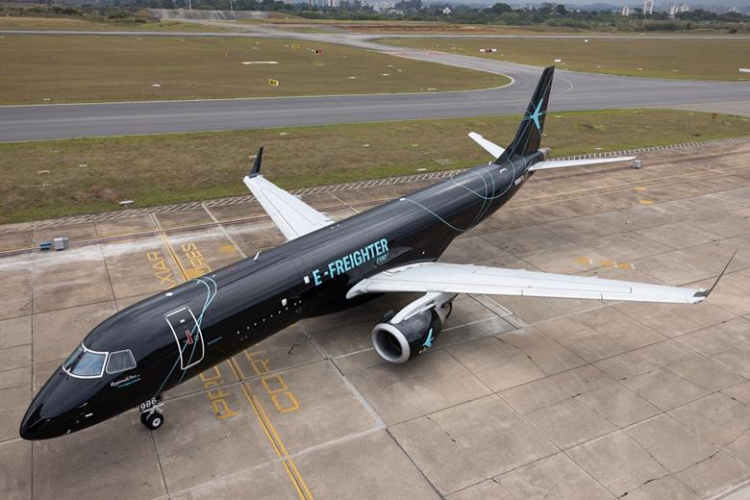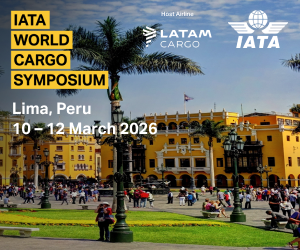Brazilian aircraft manufacturer Embraer has reaffirmed its long-term outlook for the feeder freighter market, projecting sustained demand for smaller cargo aircraft as global e-commerce activity expands and regional supply chains shift under the influence of geopolitical realignment and “friendshoring.”
In its latest Market Outlook 2025–2044 report, the company forecasts the delivery of 600 sub-20-ton payload freighter aircraft over the next two decades—a projection that remains unchanged from last year’s estimate. Embraer anticipates the global feeder freighter fleet will nearly double, growing from 340 aircraft in 2025 to 650 by 2044.
The projection is grounded in expectations of cargo tonne-kilometre (CTK) growth of 3.6% annually, outpacing the 2.5% GDP growth forecast over the same period. This underscores the industry’s confidence that cargo—and especially regional express and time-definite freight—will remain a resilient growth sector.
“E-commerce is no longer a temporary post-pandemic phenomenon—it has cemented itself as a structural driver of air cargo demand,” the report states. “The rise of platforms like Shein and Temu, which rely on airfreight to deliver low-cost goods directly to consumers, is reshaping supply chain logistics at the regional and global levels.”
E-Commerce: From Disruptor to Demand Anchor
While regulatory scrutiny is increasing in some markets, particularly around de minimis import thresholds and customs simplification, Embraer contends that the fundamental logistics model underpinning e-commerce remains intact—and reliant on airfreight.
“Despite predictions that its influence might fade post-pandemic, online-based retailers continue to shape air cargo dynamics,” the report notes. “Airfreight allows companies to bypass slower surface networks and meet escalating consumer expectations for speed, especially in regions where ground infrastructure is underdeveloped or congested.”
Indeed, international e-commerce models often exploit regulatory loopholes, shipping low-value parcels directly to consumers in markets with relaxed customs or VAT thresholds. These shipments frequently depend on nimble, lower-payload freighters that can serve secondary airports and time-sensitive intra-regional networks.
Friendshoring Fuels Regional Cargo Demand
In addition to e-commerce, the report highlights “friendshoring”—the strategic relocation of supply chains to politically aligned or economically stable countries—as a structural trend driving regional air cargo flows. As multinational corporations rewire production networks to reduce geopolitical risk, shorter supply chains and nearshoring strategies are creating a rising need for smaller, flexible freighter aircraft.
This trend is particularly pronounced in emerging markets and developing regions, where regional airfreight networks are often more efficient than road or rail, and offer crucial connectivity for time-critical shipments.
Growth Sustains Despite Headwinds
Despite macroeconomic volatility and ongoing trade tensions, Embraer’s confidence in the cargo sector remains firm. The company cites IATA data, which shows air cargo volumes grew 3.4% year-on-year during the first four months of 2025—a reflection of the sector’s enduring role in global trade.
As carriers and integrators look to modernize their feeder fleets, Embraer continues to position its E-Jet P2F conversions as ideal solutions for operators seeking fuel-efficient, right-sized capacity for underserved routes. With many existing feeder aircraft—particularly older turboprops and converted narrowbodies—nearing retirement, Embraer sees an opportunity to offer modernised replacements that align with rising environmental and economic expectations.
Looking Ahead
With demand dynamics shifting toward decentralized fulfillment, express parcel delivery, and intra-regional logistics, the next generation of freighter aircraft will be expected to deliver greater operational efficiency, lower emissions, and digital traceability.
Embraer’s continued focus on the sub-20-ton cargo segment reflects a strategic bet on where the most dynamic transformations in air logistics are occurring: not in the long-haul widebody corridors, but in the regional networks that underpin everything from e-commerce fulfillment to vaccine distribution.
As the air cargo industry recalibrates around flexibility, resilience, and sustainability, Embraer’s outlook suggests that the feeder freighter is no longer a niche segment—it is central to the future of global air logistics.





